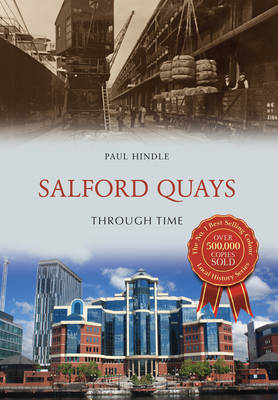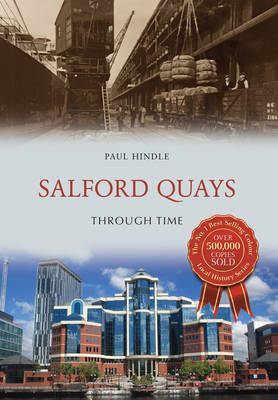
- Afhalen na 1 uur in een winkel met voorraad
- Gratis thuislevering in België vanaf € 30
- Ruim aanbod met 7 miljoen producten
- Afhalen na 1 uur in een winkel met voorraad
- Gratis thuislevering in België vanaf € 30
- Ruim aanbod met 7 miljoen producten
Zoeken
Omschrijving
As recently as the 1870s the whole area which is now Salford Quays was largely empty, occupied by little more than a medieval hall and a racecourse. But in 1887 the construction of the Manchester Ship Canal began, and the largest docks were built on the Salford bank of the canal. These docks were called 'Manchester Docks' though they were often referred to as 'Salford Docks' both by locals and on maps.The docks reached their peak traffic in the 1950s, but in 1982 the docks were closed and a plan to redevelop the area as Salford Quays was published. Within thirty years the area became home to a mix of developments including houses, apartments, offices, hotels, restaurants, shops, trams, the Lowry Theatre and art gallery, and MediaCityUK. Nearby are the former inner-city slum terraced areas of Ordsall and Weaste, now also much redeveloped for housing and industry.
Specificaties
Betrokkenen
- Auteur(s):
- Uitgeverij:
Inhoud
- Aantal bladzijden:
- 96
- Taal:
- Engels
- Reeks:
Eigenschappen
- Productcode (EAN):
- 9781445675121
- Verschijningsdatum:
- 1/03/2018
- Uitvoering:
- Paperback
- Formaat:
- Trade paperback (VS)
- Afmetingen:
- 163 mm x 231 mm
- Gewicht:
- 276 g

Alleen bij Standaard Boekhandel
+ 44 punten op je klantenkaart van Standaard Boekhandel
Beoordelingen
We publiceren alleen reviews die voldoen aan de voorwaarden voor reviews. Bekijk onze voorwaarden voor reviews.








